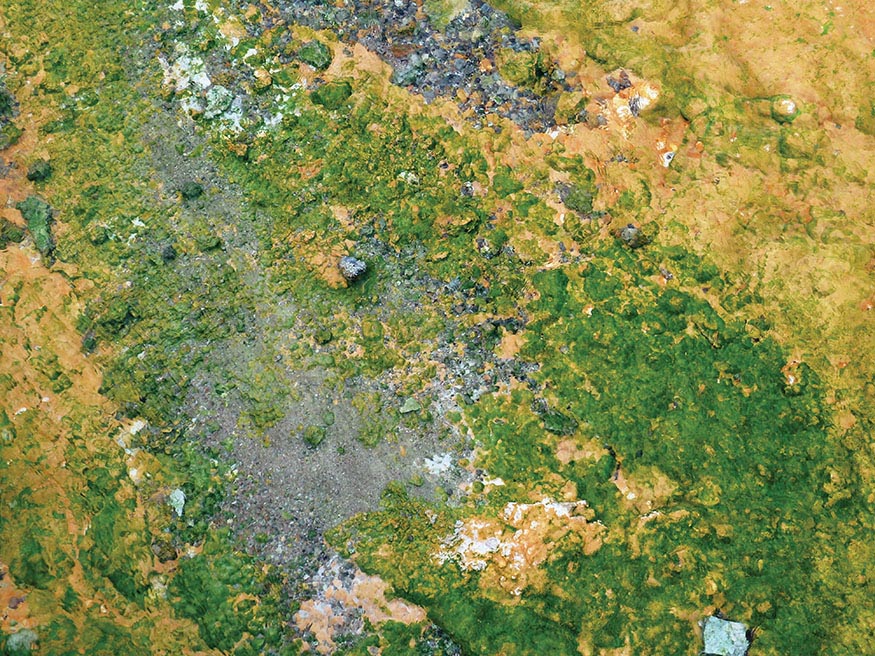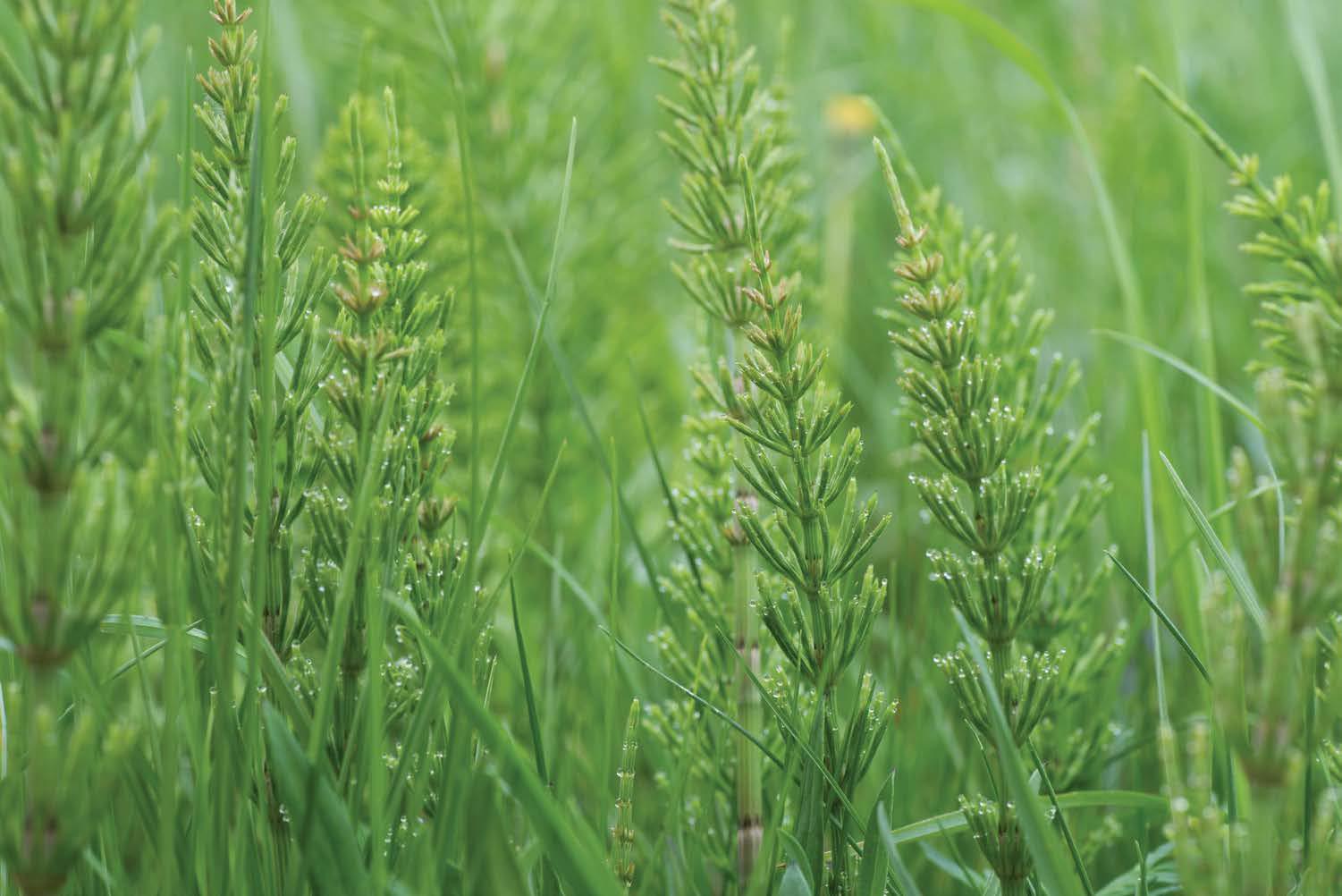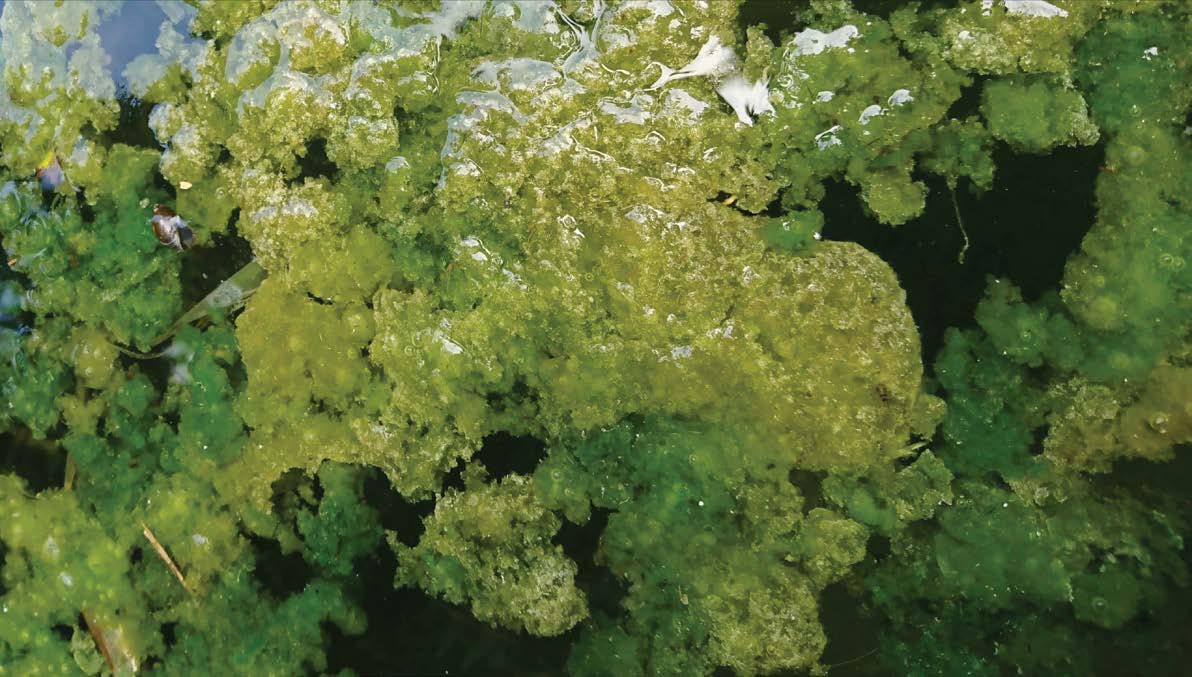
Devonian coral reefs were extensive, fringing islands and even continents. They were constructed jointly by rugose corals, such as Hexagonaria, calcerous algae (algae that have calcium carbonate anchors), and especially by stromatoporoids, sea sponges that build coral-like structures. It was in these reefs that Hexagonaria grew its trademark six-sided corallites, tightly packed in dome-like coral skeletons.
On land, life was just getting its start at the beginning of the Devonian. The world would be largely unrecognizable to us today, as only spongy mats of bacteria, algae, and mosses dominated the land. Since these “plants” lacked roots and any real way of supporting themselves, the earliest “forests” were only inches high. But that was more than enough for the first animals that roamed them: tiny creatures, particularly arthropods such as mites and early scorpions. It wasn’t until the Middle Devonian, several million years later, that the first insects began to appear, alongside plants with roots—most notably ferns and horsetails. Rooted plants began to transform the landscape and were able to spread much more widely than their rootless predecessors. It didn’t take long for vast forests of shrub-height to cover the Earth, followed soon after by the first trees. This period of rapid plant growth is known today as the “greening of the Earth” because the dry surfaces of the planet went from being largely barren rock to plant-covered in a relatively short amount of time. By the Late Devonian, the first seed-bearing plants appeared—before then, plants reproduced only by releasing spores, like ferns, or by vegetative growth.

Mats of algae, like this on some waterside rocks, would have been extremely common in the Devonian.
Ferns and horsetails were two of the primary land plant groups in the Middle Devonian.


Algal mats were a regular part of the landscape during the Devonian, both on land and in the water.